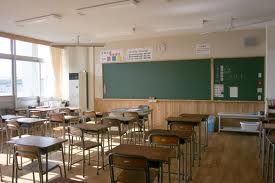“Dynamic Conservatism” and Stability in Teaching
Why has the act of teaching in public schools (including charters) that serve wealthy, middle-class and poor children looked so familiar to generation after generation of journalists, researchers, parents and grandparents who enter classrooms? In short, why has there been so much continuity in teaching over the decades?
Surely, things have changed in classrooms. Desktops and laptops are prevalent in schools; teachers use the Internet for videos in lessons; students give PowerPoint presentations; teachers take immediate polls of student answers to multiple choice questions with clickers; new textbooks, some of which are online. Yet amid those changes, there is a commonness in the unfolding of a lesson, the activities that teachers direct students to do, and Q & A that characterizes the back-and-forth between teacher and students. How to explain that familiar continuity in teaching?
The organizational concept of “dynamic conservatism” involving both continuity and change to maintain a tenuous balance in classrooms and schools comes into play here. Institutions often fight and embrace change in order to remain the same. Families, hospitals, companies, courts, city and state bureaucracies, and the military frequently respond to major reforms by adopting those parts of changes that will sustain stability.
Consider, for example, school districts where administrators add new courses on critical thinking to meet reformers’ demand for 21st century skills. Or teachers urging students to bring their laptops to class to do Internet searches, take notes, and work in teams to make PowerPoint presentations to class. These teachers have made changes in how they teach while maintaining their usual order of tasks and activities in lessons. They “hugged the middle” between traditional and non-traditional ways of teaching. [i]
Reform-driven policymakers, however, dead-set on redesigning classrooms and schools scorn hybrid teaching practices. They want transformation, not some cosmetic changes. Institutional stability is dysfunctional, they argue. It keeps worthy fundamental changes at arm’s length. Such policymakers see schools ascomplicated organizations that need a good dose of castor-oil rationality where incentives and fear, not habits from a bygone era, drive employees to do the right thing in schools and classrooms. [ii]
When policymakers intent on improving schools err in viewing schools as complicated rather than complex systems, hurdles multiply quickly to frustrate the turning of reforms into practice. Too many decision-makers lack understanding of “dynamic conservatism” in complex organizations or understand it and choose to ignore it because they see these systems as ineffective, even pathologically unworkable, and in need of re-engineering.
In adopting reforms that will jolt the system sufficiently to substantially alter teaching and learning, policymakers have mistakenly grafted practices borrowed from business organizations onto schools (e.g., zero-based budgeting in the 1970s; “management by objectives” and “restructuring schools” in the 1980s; pay-for-performance and loosening credential requirements in the 1990s and since).
No surprise, then, that policymakers treating complicated systems as complex ones in adopting and implementing school reforms–have triggered both active and passive parent, student, teacher and administrator resistance.
Analyzing the idea of “dynamic conservatism” at work in complex systems leads to a deeper understanding of why teaching over the past century has been a mix of old and new, both continuity and change. Change occurs all the time in schools and classrooms but not at the scope, pace, and schedule reform-driven policymakers lay out in their designs for reform. Sadly, such policymakers fail to understand the complex interaction between stability and change in nearly all organizations. In this failure of understanding lurks the many errors that decision-makers make in repeated efforts to transform schooling, teaching, and learning.
____________________________________
[i] Donald Schon, Beyond the Stable State: Public and Private Learning in a Changing Society (New York: Norton, 1973). See Larry Cuban, Hugging the Middle: How Teachers Teach in an Era of Testing and Accountability (New York: Teachers College Press, 2009).
[ii] John Chubb and Terry Moe, Politics, Markets, and America’s Schools(Washington, D.C.: Brookings Institution, 1990). Frederick Hess, Spinning Wheels: The Politics of Urban School Reform (Washington, D.C.: Brookings Institution, 1999).
This blog post has been shared by permission from the author.
Readers wishing to comment on the content are encouraged to do so via the link to the original post.
Find the original post here:
The views expressed by the blogger are not necessarily those of NEPC.


